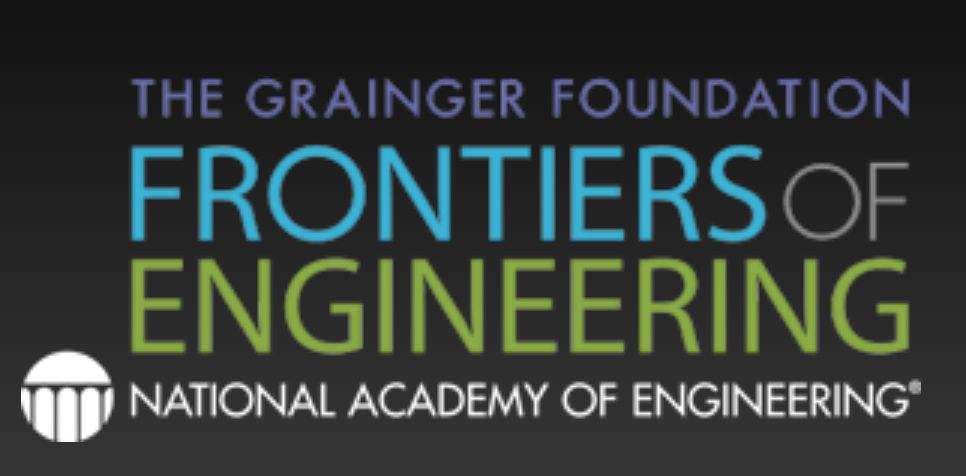
I introduced the 2022 National Academy of Engineering Frontiers of Engineering conference on September 21st. The National Academy of Engineering was founded in 1964 is part of The National Academies of Sciences, Engineering, and Medicine. The NAE operates under the same congressional act of incorporation that established the National Academy of Sciences, signed in 1863 by President Lincoln. Under this charter the NAE is directed “whenever called upon by any department or agency of the government, to investigate, examine, experiment, and report upon any subject of science or art.” My short summary is the group is made up of some of the best engineers with the purpose of advising the US government on issues related to engineering.
I kicked off the 2022 National Academy of Engineering Frontiers of Engineering conference with the transcript below.
Welcome to Seattle and welcome to the Frontiers of Engineering Symposium. It’s an honor for Amazon to be jointly hosting this gathering with the NAE. It brings together a diverse mix of leading and emerging engineers representing a wide variety of backgrounds and disciplines from industry, academia, and national labs.
Over the years, I’ve found one of the richest sources of innovation in one field is knowing a bit about other fields. In fact, most of what I’ve done over the last 35 years has been found in the cracks between engineering disciplines and between teams. Adjacent teams often find local minima. They need to be speaking with neighboring teams about what’s hard for them and drives cost and what’s easy and makes relatively little difference.
For example, conventional datacenter humidity and temperature requirements are set by the server hardware designers. Their focus is on reducing server failure rates and conservative specs are the inevitable result. Data center engineers accept without question the requirements they receive.
Both teams are optimizing for their slice of the problem space and each are likely doing good work in their respective areas. But we need investigate the cracks between these two teams by asking the server engineers, what does it cost to design servers to operate at higher inlet approach temperatures and what’s the server mortality rate when operating at higher temperatures? Basically, what’s the cost of you not getting what you want?
We can then turn around and ask the data center designers what they can save by raising the building temperature set point. What we find in that crack between those two teams is 100s of millions of dollars and years of new engineering optimizations. It’s lower cost, it’s far better for the environment, and it’s really not even all that challenging from an engineering perspective.
What find in the cracks is often very valuable. We just have to look.
Every time I get a chance to meet a leader in any field, I jump on it. The best in any field always has something to teach and it’s remarkably how frequently there’s a great idea that is “normal” in one field but relatively untried in another.
So, with that backdrop, you’ll not be surprised to learn that I’m excited to be joining you today at the Symposium. There’s gold in the cracks between different fields of engineering, different backgrounds, and different teams.
The 4 themes for this conference also really resonate with me.
- Conversational AI. It’s breakthroughs in Conversational AI that continue make Alexa more engaging and many AWS services possible. What I find amazing in Conversational AI is not the pace of innovation but rather the second derivative. What we typically see in engineering is major breakthroughs are usually followed by periods of slowing innovation as the breakthrough is improved and honed. But what is happening in Conversational AI is an acceleration of innovation driven by custom silicon, custom servers, advanced networks, and deep investments in new machine learning, and specifically deep learning, models.
- Diversity. I previously described the innovation often found in the gaps between engineering fields and teams but it also shows up between individuals. Engineers with different backgrounds and experiences often find answers that wouldn’t have been found on a less diverse team. If we have diverse teams, we have a greater chance of meeting the needs of diverse customer groups. Again, the innovation is often found in the cracks between, rather than within, a single homogeneous group or team. Diversity drives more innovation.
- Microbes. Some microbes pose great risk for our entire race while others hold great promise. I’ve been excited by the potential of using microbes to clean up oil spills and to synthesize fuels. On the other end of the spectrum, there has never been a time in my life where the imperative to learn more about dangerous microbes has ever been as clear as the last couple of years.
- Hydrogen. This is another area where we should all have a deep interest. At Amazon we are using hydrogen to power forklifts, stationary power generation, class 8 over-the-road trucks, and last mile delivery vans. Hydrogen is also a candidate energy storage system to take our intermittent solar and wind generation plants to fully dispatchable 24×7 renewable power.
Thanks for joining us here today and I think we’re all in for an exciting conference.